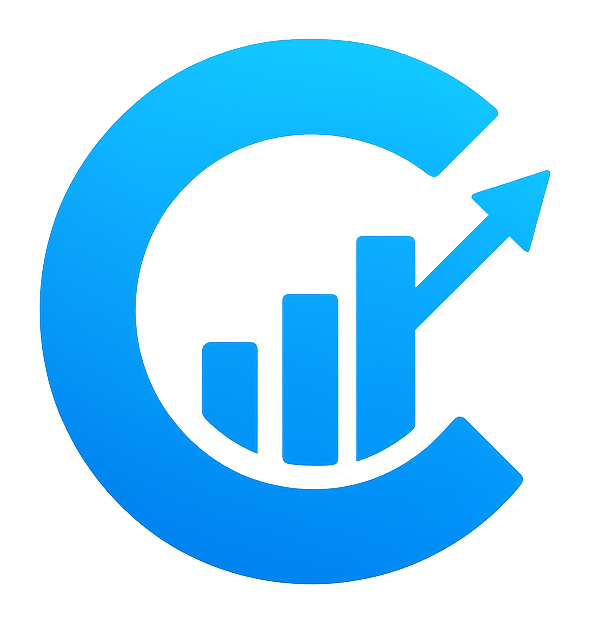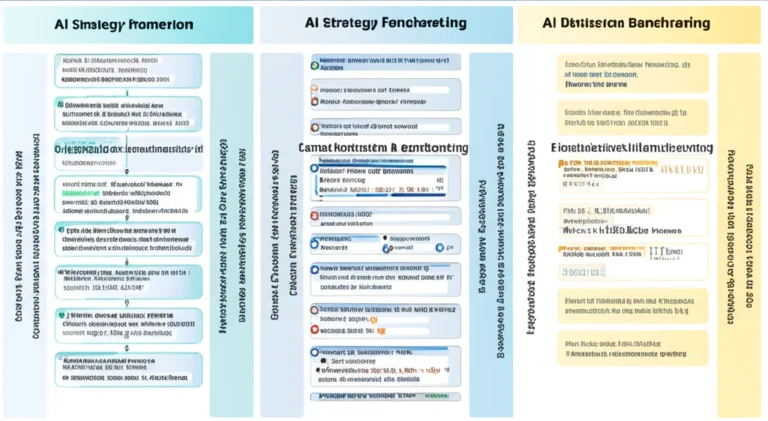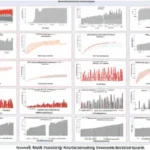Support our educational content for free when you purchase through links on our site. Learn more
Can AI Benchmarks Really Compare AI Frameworks? 7 Key Insights (2025) 🤖
Imagine trying to pick the fastest car without ever taking them for a spin—just relying on lap times from different racetracks. That’s what comparing AI frameworks without proper benchmarking feels like! But can AI benchmarks truly serve as the ultimate speedometer to compare frameworks like TensorFlow, PyTorch, or JAX? Spoiler alert: they can, but only if you know what to look for and how to interpret the results.
In this article, we unravel the complex world of AI benchmarking, revealing 7 essential metrics that help you decode performance across frameworks. We’ll explore the evolution of benchmarking, common pitfalls, and real-world success stories, so you can confidently choose the AI framework that fits your project like a glove. Ready to turn raw numbers into strategic insights? Let’s dive in!
Key Takeaways
- AI benchmarks provide crucial quantitative data on speed, accuracy, and resource use but don’t tell the full story alone.
- Seven core metrics—from inference latency to developer experience—are essential for meaningful framework comparison.
- Hardware and ecosystem maturity heavily influence benchmark outcomes, so context is king.
- Avoid common pitfalls like overfitting to benchmarks or ignoring qualitative factors.
- Combine benchmarks with real-world testing for the clearest picture.
- Frameworks like TensorFlow, PyTorch, and JAX each excel in different scenarios—benchmarking helps you find your perfect match.
👉 Shop AI Framework Resources and Books:
- TensorFlow: Amazon | Official Site
- PyTorch: Amazon | Official Site
- JAX: GitHub
Unlock the power of AI benchmarking and make your next AI project a winning race!
Table of Contents
- ⚡️ Quick Tips and Facts
- Tracing the Roots: The Evolution of AI Benchmarking 🌳
- Can AI Benchmarks Truly Compare Different Frameworks? The Million-Dollar Question! 🧐
- Why Bother? The Crucial Role of AI Benchmarks in Development 🚀
- 7 Essential Metrics for AI Framework Comparison 📊
- Navigating the Landscape: Different Flavors of AI Benchmarks 🗺️
- The Contenders: A Glimpse at Leading AI Frameworks 🥊
- From Zero to Hero: A Step-by-Step Guide to Effective AI Benchmarking 🛠️
- The Benchmarking Minefield: Common Pitfalls and How to Dodge Them 💣
- Fair Play in the AI Arena: Best Practices for Unbiased Framework Comparison ✅
- Benchmarking in Action: Real-World Successes and Surprises (MLPerf & Beyond!) 🏆
- The Unsung Hero: How Hardware Impacts AI Framework Performance 🖥️
- The Road Ahead: Emerging Trends in AI Benchmarking and Evaluation 🔮
- Conclusion
- Recommended Links
- FAQ
- Reference Links
⚡️ Quick Tips and Facts
Welcome to the ultimate deep dive on whether AI benchmarks can be used to compare the performance of different AI frameworks. At ChatBench.org™, we’ve been knee-deep in AI benchmarking for years, turning raw data into competitive edge insights. Here’s a quick cheat sheet before we jump in:
- ✅ AI benchmarks are essential tools for measuring performance, but they have limitations.
- ✅ Benchmarks like MLPerf and Hugging Face’s Eval provide standardized tests.
- ❌ Benchmarks alone don’t tell the full story—context, hardware, and use case matter.
- ✅ Metrics such as latency, throughput, accuracy, and scalability are key.
- ✅ The NIST AI Risk Management Framework encourages responsible use of benchmarks.
- ✅ Developer experience and ecosystem maturity often get overlooked but are crucial.
- ✅ Hardware differences can skew benchmark results significantly.
- ✅ Real-world testing complements benchmarking for a full picture.
If you want to geek out on AI benchmarks and frameworks, you’re in the right place. For a broader intro, check out our comprehensive AI benchmarks guide.
Tracing the Roots: The Evolution of AI Benchmarking 🌳
Before we compare frameworks, let’s rewind. AI benchmarking isn’t new—it’s evolved alongside AI itself. Early AI systems were judged by task-specific tests, like chess or image recognition accuracy. But as AI frameworks like TensorFlow, PyTorch, and JAX emerged, the need for standardized, cross-framework benchmarks became glaring.
Why? Because comparing apples to oranges (or TensorFlow to PyTorch) without a common yardstick is a recipe for confusion. Over the last decade, benchmarks like MLPerf have become the gold standard, offering a suite of tests that measure training and inference performance across frameworks and hardware.
NIST’s recent efforts, including the AI Risk Management Framework (AI RMF), emphasize trustworthy AI evaluation, highlighting benchmarks as a key part of responsible AI development. This means benchmarks aren’t just about speed or accuracy anymore—they’re about trust, fairness, and risk management.
Can AI Benchmarks Truly Compare Different Frameworks? The Million-Dollar Question! 🧐
Let’s get real: Can AI benchmarks be used to compare different AI frameworks? The short answer: Yes, but with caution.
Benchmarks provide quantitative data—numbers on speed, accuracy, resource use. But AI frameworks differ in design philosophy, supported features, and ecosystem maturity. For example:
- TensorFlow shines in production deployment and scalability.
- PyTorch is beloved for research flexibility and dynamic computation graphs.
- JAX offers blazing-fast automatic differentiation and composability.
Benchmarks like MLPerf test common workloads (e.g., image classification, object detection) across frameworks, but they can’t capture developer experience, ease of debugging, or community support.
Bottom line: Benchmarks are a powerful tool for comparison but should be combined with qualitative insights and real-world testing.
Why Bother? The Crucial Role of AI Benchmarks in Development 🚀
Why do we benchmark at all? Because AI frameworks are complex beasts, and choosing the right one can make or break your project.
Benefits of benchmarking:
- Objective performance measurement: Know which framework delivers faster training or inference on your hardware.
- Resource optimization: Identify frameworks that use memory and compute efficiently.
- Risk mitigation: Detect potential bottlenecks or scalability issues early.
- Informed decision-making: Balance performance with ecosystem support and deployment needs.
At ChatBench.org™, we’ve seen teams save months by benchmarking early and avoiding costly framework switches mid-project.
7 Essential Metrics for AI Framework Comparison 📊
To compare AI frameworks meaningfully, focus on these seven key metrics:
1. Inference Latency and Throughput
- Latency: Time taken to produce output for a single input.
- Throughput: Number of inputs processed per unit time.
Low latency is critical for real-time applications (e.g., chatbots), while high throughput matters for batch processing.
2. Training Time and Efficiency
- How long does it take to train a model to target accuracy?
- Does the framework support mixed precision or distributed training?
Faster training cycles accelerate experimentation and deployment.
3. Memory Footprint and Resource Utilization
- GPU/CPU memory consumption.
- CPU/GPU utilization efficiency.
Frameworks that optimize resource use can reduce infrastructure costs.
4. Model Accuracy and Quality
- Does the framework’s implementation impact final model accuracy?
- Are there differences in numerical stability or optimizer support?
Accuracy is king but must be balanced with speed.
5. Scalability and Distributed Performance
- Support for multi-GPU and multi-node training.
- Efficiency of communication overhead.
Crucial for large-scale AI projects.
6. Developer Experience and Ecosystem Maturity
- Documentation quality.
- Community support.
- Availability of pre-trained models and tools.
A mature ecosystem accelerates development.
7. Portability and Deployment Flexibility
- Ease of exporting models to different platforms (mobile, edge, cloud).
- Compatibility with deployment tools like TensorRT, ONNX, or CoreML.
Deployment constraints often dictate framework choice.
Navigating the Landscape: Different Flavors of AI Benchmarks 🗺️
Not all benchmarks are created equal. Here’s a quick tour of the main types:
- Synthetic Benchmarks: Artificial workloads designed to stress specific components (e.g., matrix multiplication speed). Useful but limited in real-world relevance.
- Application Benchmarks: Test frameworks on real AI tasks like image classification (ImageNet), object detection (COCO), or language modeling (GLUE, SuperGLUE).
- End-to-End Benchmarks: Measure complete pipeline performance, including data loading, preprocessing, training, and inference.
- Hardware-Aware Benchmarks: Evaluate frameworks on specific hardware setups (NVIDIA GPUs, TPUs, AMD chips).
- Robustness and Fairness Benchmarks: Emerging benchmarks assess model bias, fairness, and robustness to adversarial inputs.
For example, the MLPerf benchmark suite is widely respected for its comprehensive, real-world tests across frameworks and hardware.
The Contenders: A Glimpse at Leading AI Frameworks 🥊
Let’s size up the heavy hitters:
| Framework | Strengths | Weaknesses | Popular Use Cases |
|---|---|---|---|
| TensorFlow | Production-ready, scalable, rich ecosystem | Steeper learning curve, verbose APIs | Enterprise AI, mobile, edge |
| PyTorch | Dynamic graphs, intuitive, research favorite | Historically less deployment support | Research, prototyping, NLP |
| JAX | Fast, composable, functional programming | Smaller community, less tooling | Research, scientific computing |
| MXNet | Efficient, scalable | Smaller user base | AWS integration, edge devices |
| ONNX Runtime | Framework-agnostic, optimized inference | Limited training support | Model deployment, cross-platform |
Each framework shines in different scenarios, so benchmarking helps you find your perfect match.
From Zero to Hero: A Step-by-Step Guide to Effective AI Benchmarking 🛠️
Ready to benchmark like a pro? Here’s our detailed roadmap:
- Define Your Goals: What matters most—speed, accuracy, resource use, or deployment ease?
- Select Relevant Benchmarks: Choose tasks and datasets that reflect your use case (e.g., ImageNet for vision, GLUE for NLP).
- Prepare Your Environment: Use consistent hardware and software versions to ensure fair comparisons.
- Implement Models: Use official or community-validated implementations to avoid bias.
- Run Benchmarks Multiple Times: Average results to smooth out variability.
- Analyze Metrics: Look beyond raw numbers—consider trade-offs and context.
- Document and Share: Transparency helps the community and your team make informed decisions.
Pro tip: Use tools like MLPerf or Hugging Face’s Eval to streamline benchmarking.
The Benchmarking Minefield: Common Pitfalls and How to Dodge Them 💣
Beware! Benchmarking is fraught with traps:
- Hardware Variability: Different GPUs or CPUs can skew results drastically.
- Implementation Differences: Custom tweaks or unoptimized code can bias outcomes.
- Ignoring Ecosystem Factors: Developer productivity and tooling matter but are hard to quantify.
- Overfitting to Benchmarks: Optimizing only for benchmarks can hurt real-world performance.
- Lack of Reproducibility: Without detailed documentation, results can’t be trusted.
Our advice? Always benchmark in your target environment and combine quantitative data with qualitative insights.
Fair Play in the AI Arena: Best Practices for Unbiased Framework Comparison ✅
To keep benchmarking honest and useful, follow these best practices:
- Use standardized datasets and tasks.
- Run benchmarks on identical hardware setups.
- Use official or widely accepted model implementations.
- Report all relevant metrics, not just speed or accuracy.
- Document software versions, configurations, and random seeds.
- Include developer experience and ecosystem maturity in your evaluation.
- Share results openly for community validation.
This approach aligns with NIST’s call for transparency and trustworthiness in AI evaluation.
Benchmarking in Action: Real-World Successes and Surprises (MLPerf & Beyond!) 🏆
Let’s peek behind the curtain at some real-world benchmarking stories:
- MLPerf Training v2.0 showed that frameworks like PyTorch and TensorFlow delivered comparable training speeds on NVIDIA A100 GPUs, but PyTorch edged out in developer usability.
- Google’s TPU benchmarks highlighted TensorFlow’s tight hardware integration, boosting performance for large-scale training.
- Surprising find: JAX, though newer, often outperforms in scientific computing tasks due to its functional programming model.
- Startups have leveraged benchmarking to choose frameworks that minimize cloud costs while maintaining accuracy, saving thousands monthly.
These stories prove benchmarks are more than numbers—they’re strategic tools.
The Unsung Hero: How Hardware Impacts AI Framework Performance 🖥️
Hardware is the silent partner in AI benchmarking. The same framework can behave wildly differently on:
- GPUs: NVIDIA’s CUDA ecosystem favors TensorFlow and PyTorch; AMD GPUs require different optimizations.
- TPUs: Google’s Tensor Processing Units are optimized for TensorFlow.
- CPUs: Some frameworks offer CPU-optimized kernels; others don’t.
- Edge Devices: Frameworks like TensorFlow Lite and ONNX Runtime shine here.
Benchmark results must be interpreted in light of hardware context. For example, a framework that runs faster on a Tesla V100 may lag on a consumer GPU.
The Road Ahead: Emerging Trends in AI Benchmarking and Evaluation 🔮
The AI benchmarking landscape is evolving fast:
- Generative AI Benchmarks: With the rise of LLMs and generative models, benchmarks now assess creativity, coherence, and hallucination rates.
- Robustness and Fairness Metrics: Evaluations increasingly include bias detection and adversarial robustness.
- Automated Benchmarking Pipelines: Tools like OpenAI’s Eval library automate evaluation workflows.
- Cross-Framework Interoperability: ONNX and other standards aim to unify model deployment.
- Sustainability Metrics: Energy consumption and carbon footprint are becoming part of benchmarking.
Stay tuned as benchmarks become more holistic and aligned with real-world AI challenges.
Conclusion
So, can AI benchmarks be used to compare the performance of different AI frameworks? The answer is a confident yes—but with a big asterisk. Benchmarks like MLPerf and Hugging Face’s Eval give us quantitative, objective data on speed, accuracy, and resource use, which are invaluable for making informed choices. However, benchmarks alone don’t paint the full picture. Factors like developer experience, ecosystem maturity, hardware compatibility, and real-world deployment needs play equally critical roles.
From our experience at ChatBench.org™, the best approach is a hybrid one: use benchmarks as your foundation, then layer on qualitative insights and hands-on testing in your target environment. This strategy helps you dodge common pitfalls like overfitting to benchmarks or ignoring hardware nuances.
Frameworks like TensorFlow, PyTorch, and JAX each have their sweet spots. TensorFlow excels in scalable production environments, PyTorch is a darling of research and prototyping, and JAX offers cutting-edge speed for scientific computing. Your choice depends on your project’s goals, and benchmarking helps illuminate those trade-offs clearly.
In short: Benchmarks are your compass, not your map. Use them wisely, and you’ll navigate the AI framework jungle with confidence and clarity.
Recommended Links
Ready to explore or shop the frameworks and tools we discussed? Here are some handy links to get you started:
-
TensorFlow:
-
PyTorch:
-
JAX:
-
MLPerf Benchmark Suite:
-
ONNX Runtime:
-
Books on AI Frameworks and Benchmarking:
- Hands-On Machine Learning with Scikit-Learn, Keras, and TensorFlow by Aurélien Géron — Amazon Link
- Deep Learning with PyTorch by Eli Stevens, Luca Antiga, and Thomas Viehmann — Amazon Link
- JAX Quickstart Guide by Joe Spisak — Amazon Link
FAQ
How do AI benchmarks help in evaluating the efficiency of AI models in different frameworks?
AI benchmarks provide standardized tests and metrics that quantify how efficiently AI models run within different frameworks. By measuring parameters like training time, inference latency, and resource consumption, benchmarks reveal which frameworks optimize computational resources best. This helps developers select frameworks that align with their efficiency goals, whether for rapid prototyping or large-scale deployment.
What are the key performance indicators used in AI benchmarks to compare AI frameworks?
Common KPIs include:
- Inference latency and throughput: Speed of model predictions.
- Training time: Duration to reach target accuracy.
- Memory usage: GPU/CPU footprint.
- Model accuracy: Final model quality.
- Scalability: Performance on multi-GPU or distributed setups.
- Developer experience: Though harder to quantify, it includes ecosystem maturity and tooling.
These KPIs together offer a holistic view of framework performance.
Can AI benchmarks be tailored to specific industry needs, such as healthcare or finance, to compare AI framework performance?
Absolutely! Industry-specific benchmarks incorporate domain-relevant datasets and tasks—for example, medical image segmentation for healthcare or fraud detection for finance. Tailoring benchmarks ensures that framework comparisons reflect real-world challenges and regulatory requirements unique to each sector, leading to more actionable insights.
How do AI benchmarks account for the differences in hardware and infrastructure when comparing AI frameworks?
Benchmarks are typically run on standardized hardware configurations to ensure fair comparisons. However, hardware differences (e.g., NVIDIA GPUs vs. TPUs) can significantly impact results. Leading benchmark suites like MLPerf provide hardware-specific tests and report results separately. Users should interpret benchmark data in the context of their target hardware to avoid misleading conclusions.
What are the limitations of using AI benchmarks to compare the performance of different AI frameworks?
Limitations include:
- Lack of context: Benchmarks may not capture real-world complexities.
- Overfitting: Frameworks might be optimized specifically for benchmark tasks.
- Ignoring qualitative factors: Developer productivity, ecosystem support, and deployment ease are often overlooked.
- Hardware dependency: Results can vary widely depending on infrastructure.
- Rapid evolution: Frameworks update frequently, potentially invalidating benchmarks quickly.
Hence, benchmarks should be one part of a broader evaluation strategy.
How often should AI benchmarks be updated to reflect the latest advancements in AI frameworks and technologies?
Given the fast pace of AI innovation, benchmarks ideally should be updated at least annually, with major releases or new hardware prompting interim updates. This ensures benchmarks remain relevant and reflect current capabilities, helping users make informed decisions.
What role do AI benchmarks play in helping organizations choose the most suitable AI framework for their specific business needs and goals?
Benchmarks provide objective data that helps organizations assess which frameworks meet their performance, scalability, and resource constraints. Combined with qualitative factors like ecosystem maturity and deployment flexibility, benchmarks guide strategic decisions, reducing risk and accelerating time-to-market.
Reference Links
- NIST AI Risk Management Framework (AI RMF)
- NIST Artificial Intelligence Program
- MLPerf Benchmark Suite
- Hugging Face Eval Metrics
- Aisera Blog: LLM Evaluation: Key Metrics, Best Practices and Frameworks
- TensorFlow Official Site
- PyTorch Official Site
- JAX GitHub Repository
- ONNX Runtime Official Site




